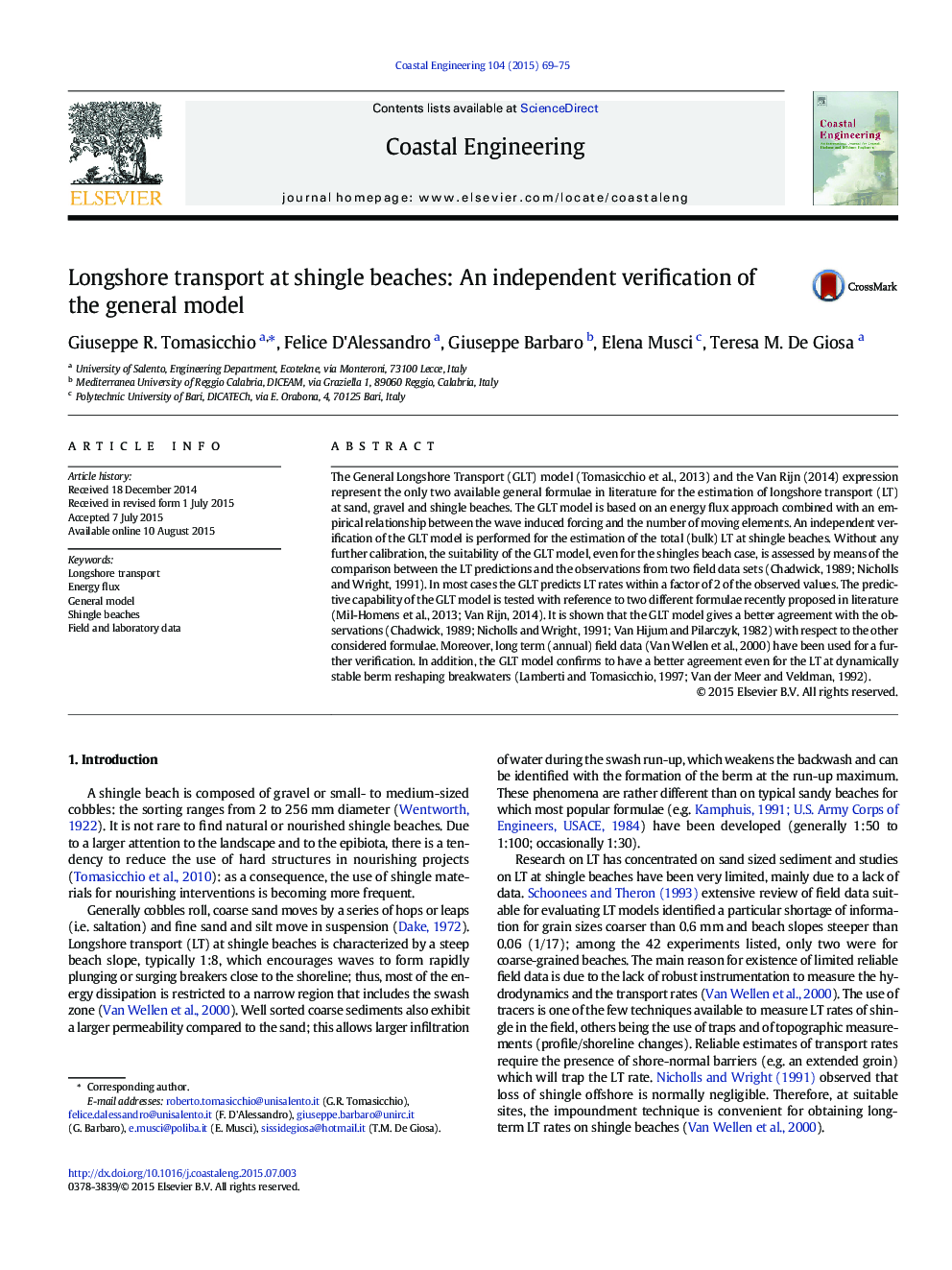| Article ID | Journal | Published Year | Pages | File Type |
|---|---|---|---|---|
| 1720610 | Coastal Engineering | 2015 | 7 Pages |
•GLT model allowing to determine the LT rate at any given coastal structure•Valid for dynamically stable berm reshaping breakwaters, shingle and sandy beaches•Independent verification with field and laboratory data at shingle beaches•Predictive accuracy at shingle beaches verified against some of the existing formulae in literature•A robust and easy to use single tool to design a coastal structure
The General Longshore Transport (GLT) model (Tomasicchio et al., 2013) and the Van Rijn (2014) expression represent the only two available general formulae in literature for the estimation of longshore transport (LT) at sand, gravel and shingle beaches. The GLT model is based on an energy flux approach combined with an empirical relationship between the wave induced forcing and the number of moving elements. An independent verification of the GLT model is performed for the estimation of the total (bulk) LT at shingle beaches. Without any further calibration, the suitability of the GLT model, even for the shingles beach case, is assessed by means of the comparison between the LT predictions and the observations from two field data sets (Chadwick, 1989; Nicholls and Wright, 1991). In most cases the GLT predicts LT rates within a factor of 2 of the observed values. The predictive capability of the GLT model is tested with reference to two different formulae recently proposed in literature (Mil-Homens et al., 2013; Van Rijn, 2014). It is shown that the GLT model gives a better agreement with the observations (Chadwick, 1989; Nicholls and Wright, 1991; Van Hijum and Pilarczyk, 1982) with respect to the other considered formulae. Moreover, long term (annual) field data (Van Wellen et al., 2000) have been used for a further verification. In addition, the GLT model confirms to have a better agreement even for the LT at dynamically stable berm reshaping breakwaters (Lamberti and Tomasicchio, 1997; Van der Meer and Veldman, 1992).
